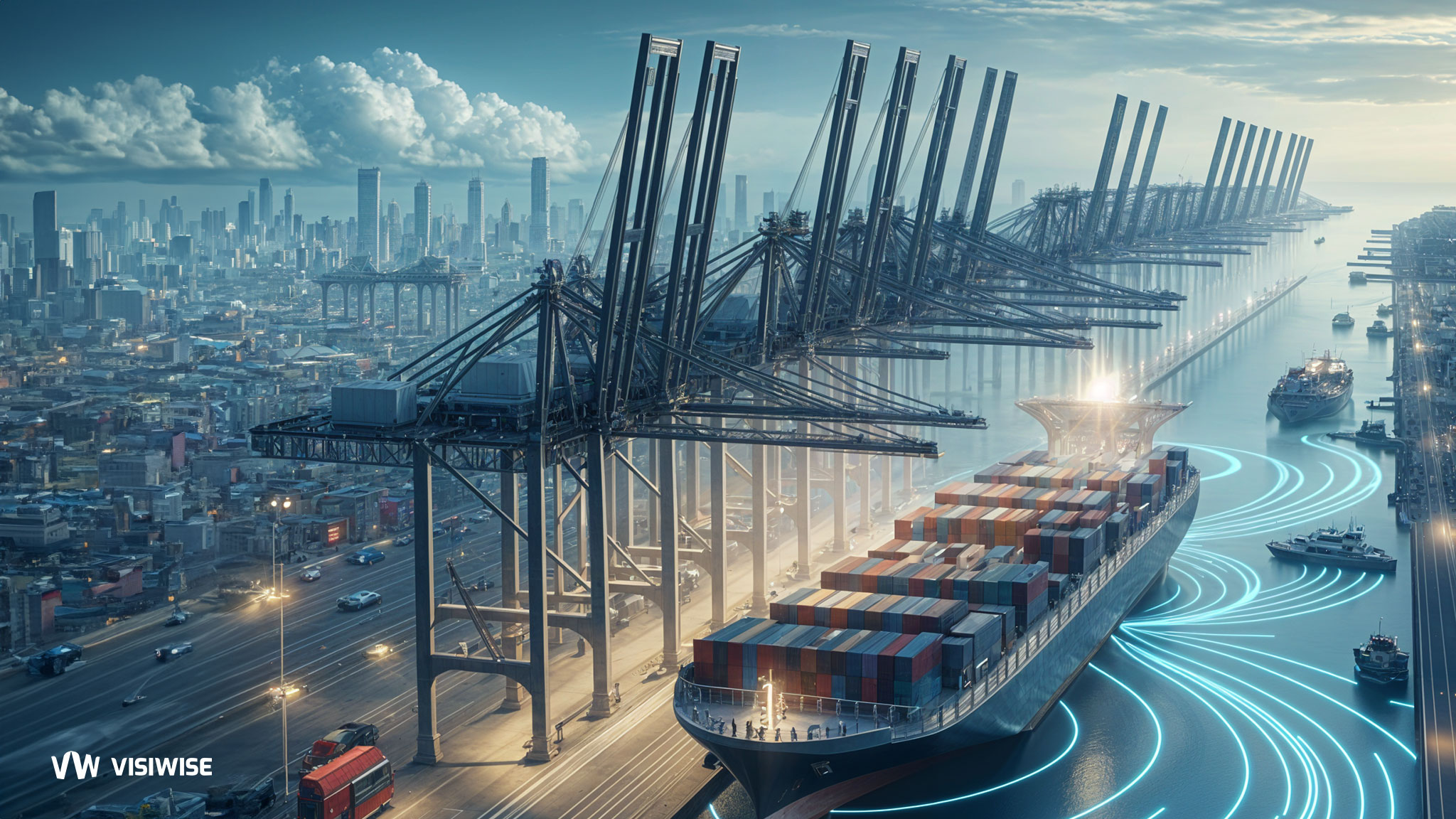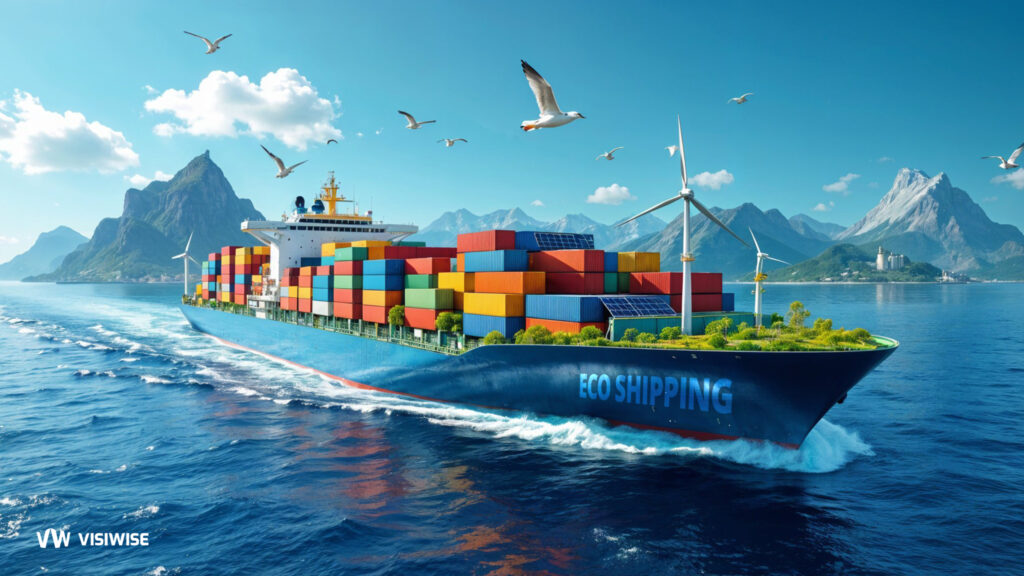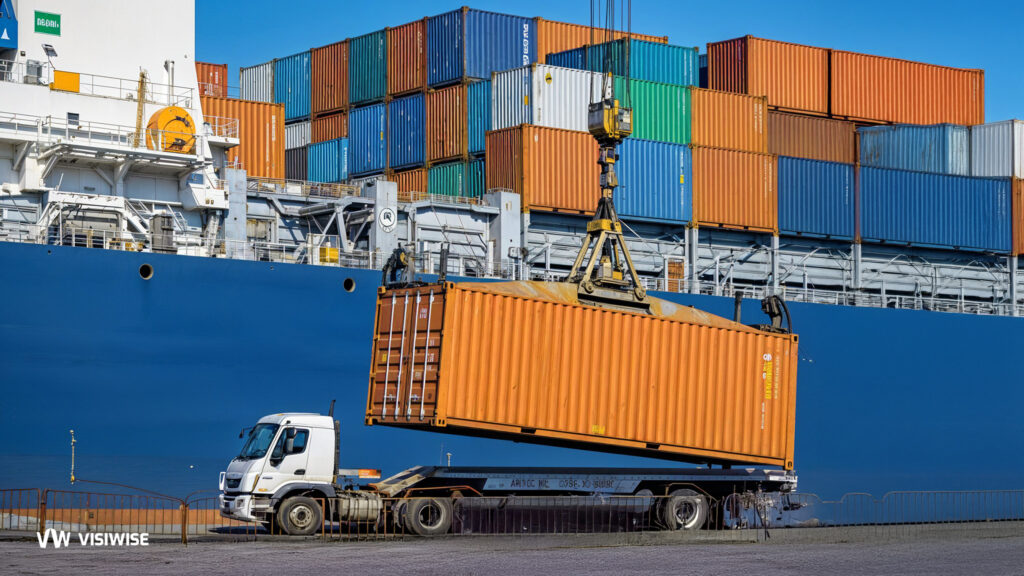In the ever-evolving landscape of global trade, ports serve as critical nodes in the logistics chain. They are not merely transit points but complex hubs where goods are transferred between different modes of transport. The efficiency of port operations directly influences the speed, cost, and reliability of global shipping. With the surge in global trade volumes and the increasing complexity of supply chains, enhancing port efficiency has become a paramount objective. Technology plays a pivotal role in this transformation, offering innovative solutions to streamline operations, improve safety, and reduce environmental impact. This article explores the various technological advancements enhancing port efficiency, including automation, digitalization, advanced analytics, and sustainable technologies.
Automation in Port Operations
One of the most significant technological advancements in port operations is automation. Automated systems and machinery can handle tasks traditionally performed by human labor, increasing speed and reducing errors. Key areas where automation is making a substantial impact include container handling, yard management, and gate operations.
Automated Container Handling
Automated container handling systems, such as Automated Guided Vehicles (AGVs), Automated Stacking Cranes (ASCs), and ship-to-shore cranes, are transforming how containers are moved within ports. For example, the Port of Rotterdam utilizes AGVs to transport containers from quay to yard, significantly reducing the time taken for these operations and enhancing overall efficiency.
Automated Yard Management
In the yard, automation helps in stacking and retrieving containers with precision. Advanced algorithms and robotics ensure optimal use of space and minimize the time containers spend in the yard, leading to faster turnaround times. Ports like Singapore’s PSA and Germany’s Hamburg port have successfully implemented automated yard systems, demonstrating significant
Automated Gate Operations
Automated gate systems streamline the entry and exit processes for trucks, reducing congestion and wait times. Technologies such as Optical Character Recognition (OCR) and Radio-Frequency Identification (RFID) enable seamless identification and tracking of containers and vehicles, ensuring smooth and efficient gate operations.
Digitalization and the Internet of Things (IoT) in Port Operations
Digitalization is transforming port operations by integrating advanced digital technologies to enhance data flow, decision-making, and overall operational efficiency. Central to this transformation is the Internet of Things (IoT), which connects various port assets and systems, enabling seamless communication and data exchange.
IoT devices, including sensors and smart equipment, are deployed across port infrastructures to monitor a wide range of parameters such as equipment status, environmental conditions, and cargo movement. This real-time data collection allows for predictive maintenance of machinery, reducing downtime and extending the lifespan of critical assets. For instance, IoT-enabled sensors on cranes and container handling equipment can provide continuous feedback on their operational status, alerting maintenance teams to potential issues before they lead to failures.
Moreover, digitalization through IoT facilitates better resource management and optimization. By analyzing data from IoT devices, ports can streamline operations such as berth allocation, container tracking, and fuel consumption, leading to more efficient and sustainable practices. Ports like Rotterdam and Hamburg have already implemented IoT solutions to optimize their logistics chains and improve operational transparency.
IoT for Real-Time Monitoring
IoT devices, including sensors and GPS trackers, provide real-time data on the location, condition, and status of containers and cargo. This data helps port operators monitor operations more effectively, predict potential issues, and make informed decisions. For instance, the Port of Los Angeles uses IoT-enabled sensors to monitor air quality and equipment performance, enhancing operational efficiency and environmental compliance.
Digital Twin Technology
Digital twins are virtual replicas of physical port infrastructure and operations. They allow port operators to simulate different scenarios and optimize processes. For example, the Port of Rotterdam has developed a digital twin of its entire port area, enabling real-time monitoring and predictive maintenance of infrastructure and equipment. This technology helps in identifying potential bottlenecks and improving overall efficiency.
Blockchain for Secure Transactions
Blockchain technology is revolutionizing the way ports handle documentation and transactions. It provides a secure and transparent platform for recording and verifying transactions, reducing the risk of fraud and errors. The Port of Antwerp has implemented blockchain solutions to streamline and secure its logistics processes, demonstrating improved efficiency and security in port operations.
Advanced Analytics and Artificial Intelligence (AI)
Advanced analytics and AI are transforming how ports manage their operations by providing deeper insights and predictive capabilities. These technologies enable ports to optimize their resources, forecast demand, and enhance decision-making
Predictive Maintenance
AI-driven predictive maintenance systems analyze data from sensors and equipment to predict when maintenance is needed. This proactive approach helps in preventing equipment failures and reducing downtime. Ports like Singapore’s PSA have adopted AI-based predictive maintenance solutions to ensure the reliability and efficiency of their equipment.
Optimizing Cargo Flow
Advanced analytics can optimize cargo flow within ports by analyzing patterns and trends in cargo movement. AI algorithms can predict peak times and allocate resources accordingly, ensuring smooth and efficient operations. For instance, the Port of Hamburg uses AI to optimize its container handling processes, resulting in reduced congestion and improved throughput.
Enhanced Decision-Making
AI-powered decision support systems provide port operators with real-time recommendations based on data analysis. These systems help in making informed decisions about resource allocation, scheduling, and operational strategies. The Port of Los Angeles, for example, utilizes AI to improve its decision-making processes, enhancing overall port efficiency.
Sustainable Technologies
Sustainability is a critical concern for modern ports, driven by environmental regulations and the need to reduce the ecological footprint of port operations. Technological innovations are playing a crucial role in promoting sustainable practices.
Electrification and Renewable Energy
Ports are increasingly adopting electrification and renewable energy solutions to reduce their carbon footprint. Electrification of port equipment, such as cranes and AGVs, helps in reducing emissions. The Port of Long Beach, for instance, is implementing electrified cranes and vehicles as part of its Green Port Policy to promote sustainable operations.
Additionally, ports are investing in renewable energy sources like solar and wind to power their operations, further enhancing sustainability.
Energy Management Systems
Advanced energy management systems optimize the use of energy in port operations. These systems monitor energy consumption, identify inefficiencies, and implement measures to reduce energy usage. The Port of Rotterdam uses an integrated energy management system to monitor and manage its energy consumption, resulting in significant energy savings and reduced emissions.
Green Shipping Initiatives
Ports are also encouraging green shipping practices by providing incentives for eco-friendly vessels. Technologies such as shore power allow ships to plug into the port’s electrical grid while docked, reducing the need for auxiliary engines and lowering emissions. The Port of Gothenburg, for example, offers reduced port fees for ships that use shore power, promoting cleaner shipping practices.
Challenges and Future Directions
While technology offers immense potential for enhancing port efficiency, there are challenges that need to be addressed. These include high implementation costs, the need for skilled personnel, and cybersecurity concerns.
Implementation Costs
The initial investment required for implementing advanced technologies in ports can be substantial. The costs associated with upgrading infrastructure, purchasing new equipment, and integrating sophisticated software solutions are often significant. Ports need to carefully assess the cost-benefit ratio to ensure that the long-term gains in efficiency, safety, and sustainability justify the upfront expenditures. This assessment should include a detailed analysis of potential savings in operational costs, reductions in downtime, and improvements in cargo handling capabilities.
To mitigate these financial challenges, ports can explore various funding options. Public-private partnerships (PPPs) offer a viable solution, allowing ports to leverage private sector investment while sharing the risks and rewards associated with technological upgrades. Such partnerships can provide the necessary capital for large-scale projects while ensuring that both public and private entities benefit from enhanced port operations.
Government grants and subsidies are another critical funding source. Many governments recognize the strategic importance of modernizing port infrastructure to boost economic competitiveness and reduce environmental impact. Consequently, they offer grants and financial incentives to support the adoption of advanced technologies. Ports should actively seek out these opportunities and collaborate with governmental bodies to secure funding.
Skilled Workforce
The successful implementation and operation of advanced technologies require a skilled workforce. Ports need to invest in training and development programs to equip their personnel with the necessary skills. Collaboration with academic institutions and technology providers can help in developing tailored training programs.
Cybersecurity
As ports become more digitalized, they become more vulnerable to cyber threats. Ensuring robust cybersecurity measures is crucial to protect sensitive data and maintain operational integrity. Ports need to adopt comprehensive cybersecurity strategies, including regular risk assessments, employee training, and the implementation of advanced security solutions.
Looking ahead, the role of technology in enhancing port efficiency will continue to grow. Emerging technologies such as 5G, autonomous vessels, and advanced robotics hold promise for further transforming port operations. The integration of these technologies will enable ports to handle larger volumes of cargo more efficiently, reduce environmental impact, and enhance overall competitiveness in the global logistics network.
5G Connectivity
The deployment of 5G technology in ports promises to revolutionize communication between devices and systems, leading to significant improvements in efficiency and safety. With its ultra-fast speeds and low latency, 5G enables real-time monitoring and data exchange across port operations. This advanced connectivity allows for seamless integration of Internet of Things (IoT) devices, such as sensors and automated equipment, enhancing the accuracy and speed of data collection and analysis.
One of the key benefits of 5G in ports is the ability to support remote operations. For instance, remote-controlled cranes and autonomous vehicles can be operated with greater precision and reliability, reducing the need for on-site human intervention and increasing operational efficiency. Additionally, the real-time data provided by 5G-connected devices can help port operators quickly identify and address issues, such as equipment malfunctions or security breaches, thereby minimizing downtime and enhancing safety.
Moreover, 5G technology facilitates better coordination and management of port logistics. By providing a robust and reliable communication network, 5G ensures that all elements of the port’s ecosystem, from cargo handling to vessel traffic management, are synchronized and operating at optimal efficiency. This leads to faster turnaround times, reduced congestion, and lower operational costs, making ports more competitive in the global shipping industry.
Autonomous Vessels
The advent of autonomous vessels will revolutionize maritime transport. These vessels can operate with minimal human intervention, reducing labor costs and improving safety. Ports need to prepare for the integration of autonomous vessels by upgrading their infrastructure and developing new operational protocols.
Advanced Robotics
The use of advanced robotics in port operations, including automated inspection and maintenance robots, will further enhance efficiency and reduce operational costs. These robots can perform tasks that are hazardous or difficult for humans, ensuring safety and improving productivity.
Real-Time Visibility
Real-time visibility is not just a buzzword but a transformative force shaping the efficiency of ports worldwide. It represents a paradigm shift in the way maritime operations are conducted, leveraging advanced technology to enhance every aspect of port management and logistics.
At its core, real-time visibility enables ports to monitor vessel movements, track cargo in transit, and manage terminal operations with unprecedented precision and agility. By harnessing a network of sensors, GPS technologies, and interconnected systems, port authorities can orchestrate the seamless flow of goods from ship to shore and beyond.
One of the key benefits of real-time visibility is its ability to optimize berth allocation and cargo handling. With instant access to vessel positions and cargo statuses, ports can dynamically adjust their operations, minimizing turnaround times and reducing congestion. This not only improves the overall efficiency of port operations but also enhances the reliability of supply chains, ensuring that goods reach their destinations in a timely manner.
Moreover, real-time visibility extends beyond the confines of port terminals, providing stakeholders along the entire supply chain with valuable insights into shipment progress and inventory levels. Manufacturers, freight forwarders, and retailers can all benefit from this real-time data, enabling them to make more informed decisions and respond quickly to changing market conditions.
In essence, real-time visibility is not just a tool for enhancing port efficiency; it is a catalyst for innovation and collaboration in the maritime industry. As technology continues to evolve, so too will the capabilities of real-time visibility, driving ports towards new levels of productivity, sustainability, and connectivity in the global economy.
Final Thoughts
In conclusion, technology is playing a pivotal role in enhancing port efficiency. Automation, digitalization, advanced analytics, and sustainable technologies are transforming port operations, making them faster, more reliable, and environmentally friendly. While challenges remain, the continued adoption and integration of these technologies will drive the future growth and competitiveness of ports in the global logistics network. As ports evolve into smart, connected hubs, they will be better equipped to handle the increasing demands of global trade, contributing to a more efficient and sustainable supply chain.



